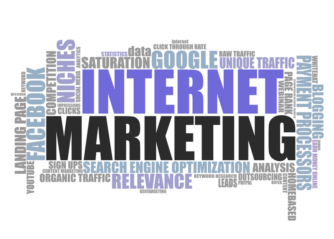Supply Chain: A Comprehensive Guide

Introduction
The concept of supply chain management (SCM) has gained significant importance in today’s globalized and interconnected world. It encompasses the entire range of activities involved in bringing a product or service from its conception to its ultimate consumption. Understanding the supply chain is crucial for individuals and businesses alike as it affects various aspects of their daily lives. In this article, we will delve into the intricacies of supply chain management, its historical evolution, and its relevance in today’s dynamic business environment.
What is Supply Chain Management?

Supply chain management refers to the coordination and optimization of the flow of goods, information, and services from the point of origin to the point of consumption. It involves the integration of key stakeholders, including suppliers, manufacturers, distributors, retailers, and customers, to ensure the smooth flow of products or services in a cost-effective and efficient manner.
Key Components of a Supply Chain
To understand the intricate workings of a supply chain, it is essential to comprehend its key components. These components include:
1. Suppliers: Suppliers play a critical role in the supply chain by providing the necessary raw materials, components, or services required for production. Building strong relationships with reliable suppliers is essential to ensure the timely availability of inputs.
2. Manufacturers: Manufacturers are responsible for transforming raw materials into finished products through various production processes. They need to optimize their operations to meet customer demand while minimizing costs.
3. Warehousing and Distribution: Warehouses and distribution centers act as intermediaries between manufacturers and customers. They store, sort, and distribute products to different locations based on demand and ensure timely delivery.
4. Transportation: Transportation plays a vital role in supply chain management as it facilitates the movement of goods from one location to another. It includes various modes like road, rail, air, and sea, with each having its advantages and limitations.
5. Retailers: Retailers are the final link in the supply chain, responsible for selling products directly to end consumers. They play a crucial role in demand forecasting, inventory management, and customer satisfaction.
Historical Evolution of Supply Chain Management
The concept of supply chain management has evolved over time in response to the changing business landscape and technological advancements. Initially, supply chains were focused on managing physical products and operated in a linear fashion, known as the traditional supply chain.
However, with the advent of globalization and technological innovations, supply chains became more interconnected and complex. The introduction of computer systems and the internet revolutionized supply chain management, giving rise to what is now known as the digital supply chain.
The digital supply chain leverages advanced technologies like artificial intelligence, big data analytics, and the Internet of Things (IoT) to enhance efficiency, visibility, and collaboration across the entire supply chain network. It enables real-time tracking of inventory, predictive analytics for demand forecasting, and seamless communication between stakeholders.
Achieving Featured Snippet on Google Search
To increase the likelihood of obtaining a featured snippet on a Google search, it is crucial to structure the article effectively and incorporate relevant bulleted points. By providing concise and well-organized information, search engines are more likely to identify the article as a credible source to feature.
To enhance the article’s chances of being featured, consider incorporating the following headings and subheadings:
Introduction to Supply Chain Management
– Definition of supply chain management
– Importance for individuals and businesses
Key Components of a Supply Chain
– Suppliers
– Manufacturers
– Warehousing and Distribution
– Transportation
– Retailers
Historical Evolution of Supply Chain Management
– Traditional supply chain
– Digital supply chain
Achieving Featured Snippet on Google Search
– Importance of article structure
– Incorporating relevant bulleted points
– Ensuring concise and well-organized information
Conclusion
Understanding the intricacies of supply chain management is essential for individuals and businesses to navigate today’s competitive global market effectively. By comprehending the key components and historical evolution of supply chains, stakeholders can optimize their operations, enhance customer satisfaction, and stay ahead of the curve. Ongoing technological advancements and the adoption of digital supply chain strategies continue to revolutionize the way supply chains operate, promising even greater efficiency and effectiveness in the future.
















































